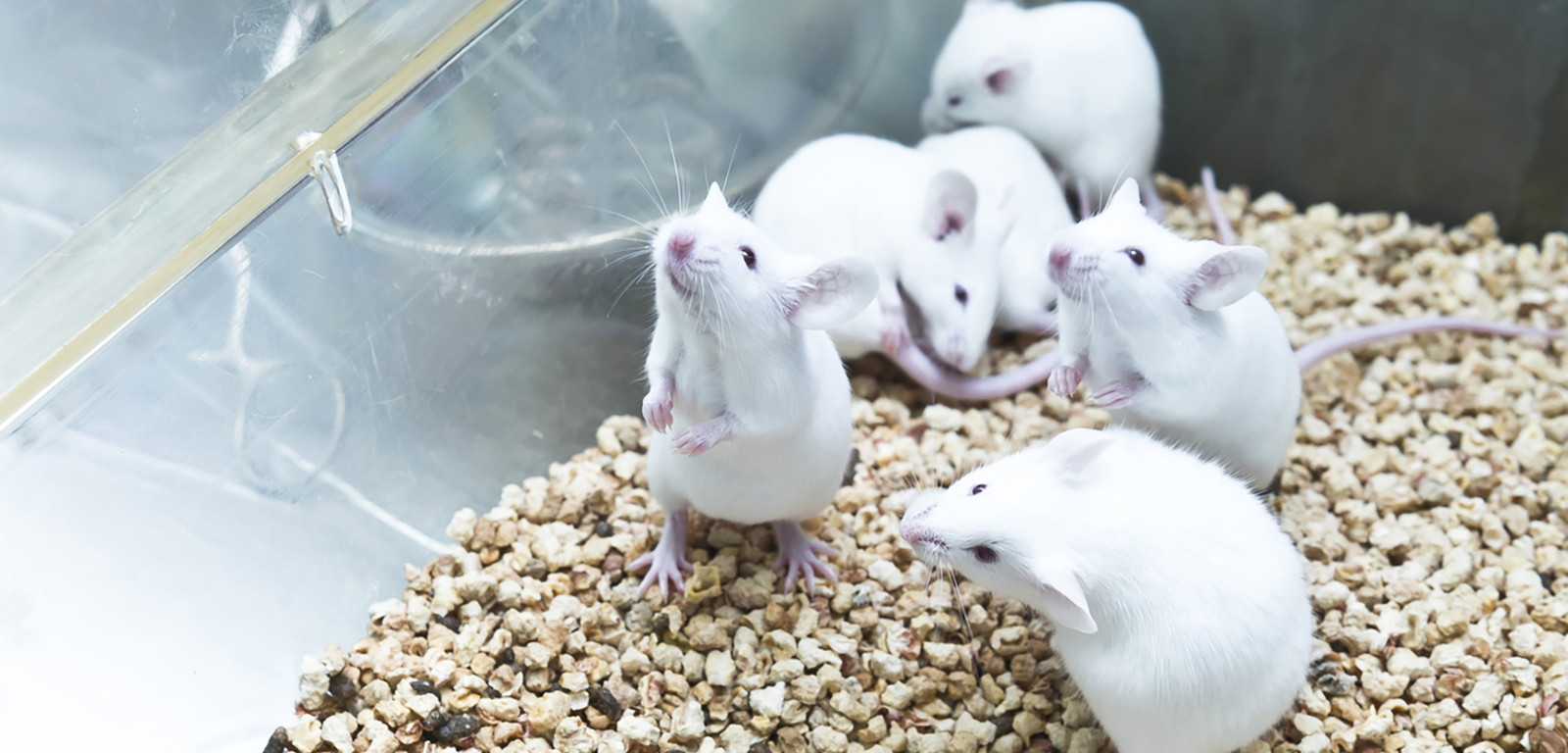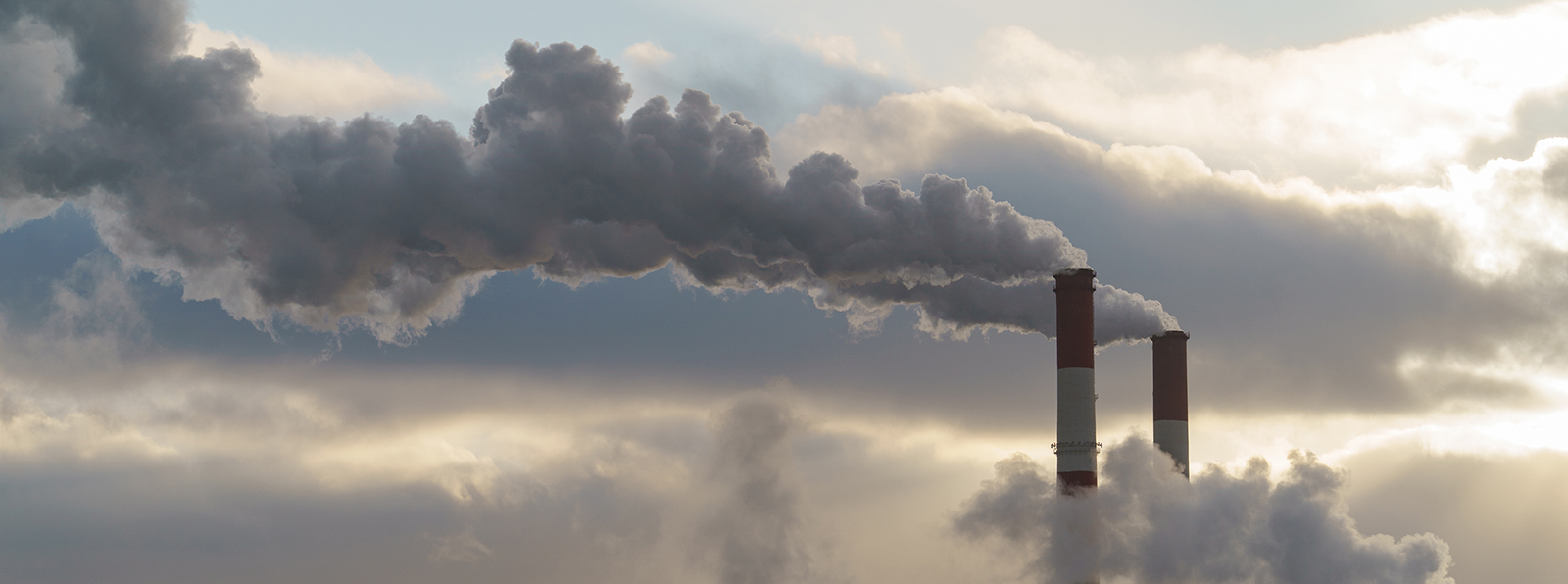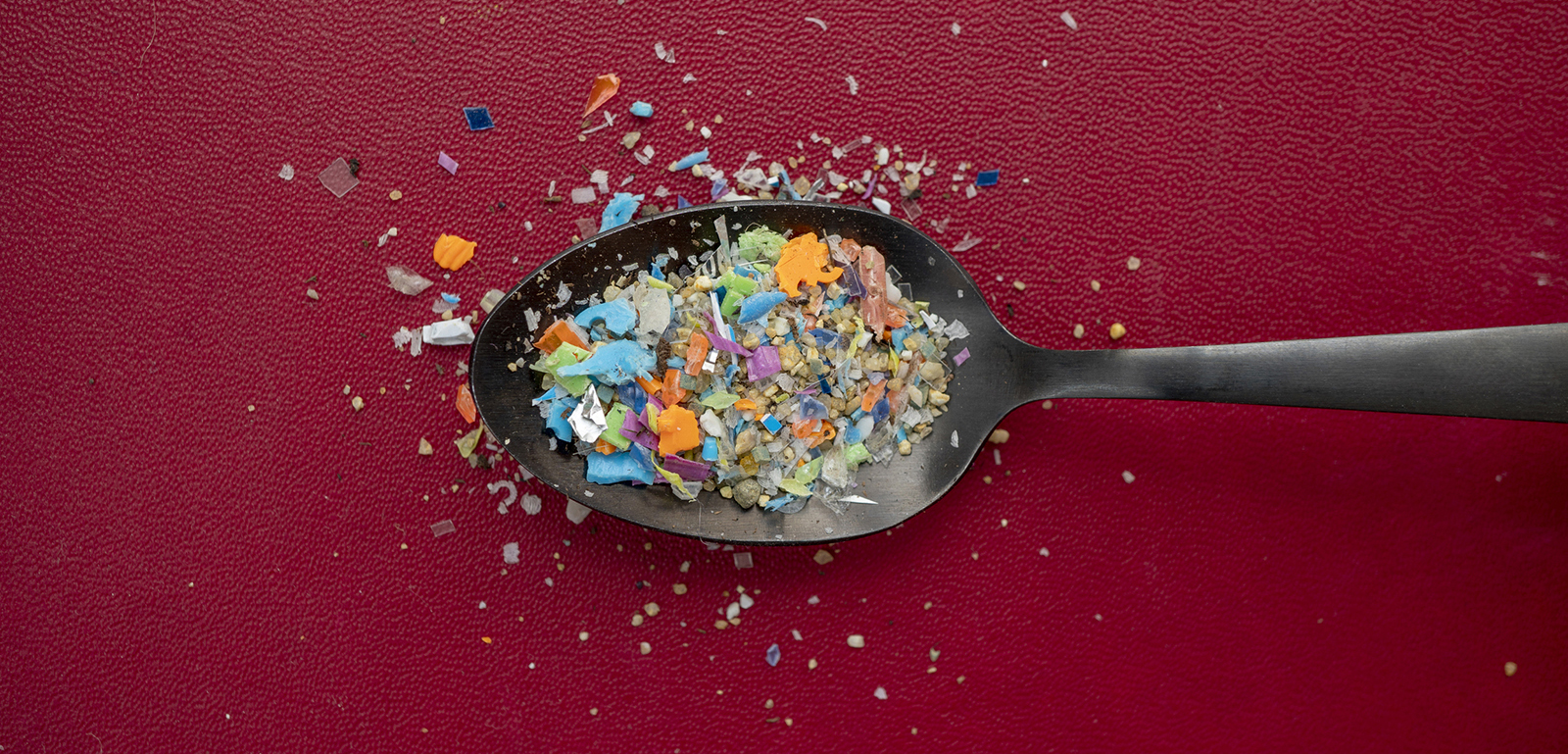Forget AI, Welcome to the Dawn of Plastic People
Tiny bits of petroleum are relentlessly accumulating in our bodies
June 6, 2024
The bottom of Narragansett Bay is covered in microplastics, but that’s not the biggest concern, because these tiny bits of petroleum are also swimming in our blood and lodged in our organs. We choke down all this plastic with oil, and by huffing gasoline.
“We can’t solve the climate crisis without solving the plastics problem,” Jed Thorp, state director of Clean Water Action Rhode Island, told a May 4 audience at Brown University during the 2024 Climate Change & Health Symposium.
For far too many of us, especially those who sit in boardrooms and those they buy, neither emergency is of particular concern. We continue to wrap bananas, cucumbers, and organic produce in plastic. We go on adding plastic bits to consumer goods, such as exfoliating scrubs.
While we drown in plastic pollution and choke on fossil fuels, a small, loud, and obnoxious segment of society screams about woke appliances that save energy — and, of course, money, but that hardly matters to the Mad Hatters.
The punchinellos in Congress respond to this siren song by filing bills titled Hands Off Our Home Appliances, Refrigerator Freedom, and Liberty in Laundry. To these elected representatives, climate scientists and health care professionals are the con artists.
Fossil fuel corporations have turned us into halfwits. In the early 1940s, we created a superhero called Plastic Man. Now, eight decades later, we feed plastic to our babies. Infants fed with plastic bottles swallow trillions of synthetic particles a day, according to a 2020 study. Scientists found that the recommended high-temperature process for sterilizing plastic bottles and preparing formula milk causes them to shed millions of microplastics and trillions of even smaller nanoplastics.
Adults even feed themselves plastic. A 2018 study tested some 250 bottles of water bought in nine countries and found that 93% contained microplastics.
The birth of plastic people has graduated from phase one.
Polypropylene baby bottles make up about 80% of the world market (glass bottles are the primary alternative). In fact, polypropylene is one of the most commonly used plastics. A Shell webpage touting the No. 5 plastic brags about all the consumer goods the petroleum product can be found in. It calls PE a sustainable alternative. Most of it, though, isn’t or can’t be recycled. (It has been estimated that only about 9% of the plastic ever produced has been recycled.)
Shell used the deadly pandemic to espouse the benefits of polypropylene. “Plastics have been key during the pandemic because of the hygenic properties it has, which was especially important amid health concerns spurred by COVID” and “Plastic consumer goods help homeowners promote and manage togetherness.”
Are barf bags made of plastic?
There’s a reason Shell and the other fossil fuel monsters relentlessly feed us plastic. Thorp made mention of it during his talk at Brown last month.
“The biggest growth sector in the fossil fuel industry isn’t liquid fuels but plastics,” he said.
Apparently, filling our lungs with fine particulate matter isn’t enough.

Ninety-nine percent of all plastics are made from fossil fuels, and the industry is counting on a dramatic increase in plastic consumption since it is facing a world that is moving — albeit glacially slow — toward renewable energy and away from the burning of methane, oil, gasoline, diesel, propane, kerosene, and coal.
Since plastics contribute to global warming throughout their life cycle — a study published in April found that global plastic production is a major driver of the climate crisis — elected officials, policymakers, and the public need to recognize these petroleum products are just a different form of fossil fuels and that climate mitigation efforts must include measures to reduce their use.
The way we manufacture, overuse, and casually dispose of plastic is polluting the environment, degrading human health and ecosystems, and destabilizing the climate.
If plastic production and consumption grow as currently trending, by 2030, emissions from the sector could reach 1.34 gigatons annually — equivalent to the emissions released by 295 new 500-megawatt coal-fired power plants, according to a 2019 report. By 2050, the accumulation of these greenhouse gas emissions from plastic could reach 56 gigatons — 10% to 13% of the entire remaining carbon budget.
“The whole production process, the whole life cycle from cradle to grave, is a climate disaster,” Thorp said during a recent online conversation with me.
Armed with this knowledge, the global production of plastic increased from 2 million metric tons in 1950 to 460 million metric tons in 2019. Today, about two-thirds of that tonnage is designed for a single use — think water bottles or smaller bottles that hold 1.7 ounces of cheap booze — and every U.S. household throws out some 60 pounds of multilayered packaging annually. The lifespan of plastics, however, is much longer than a few minutes: try 450 to 1,000 years, with the material constantly degrading into smaller bits.
It has been estimated that worldwide plastic use will triple by 2060.
That’s a lot of plastic breaking down. Eat up. We will pay dearly, both economically and health-wise, like we do when it comes to Superfund sites and oil spills.
Plastic is certainly valuable in many applications, but single-use plastics isn’t one of them. Pouring bits of petroleum into a smorgasbord of products isn’t benefiting society, but it is making consumers pay for fossil fuel industry waste products. I’ll let Thorp explain.
“There’s a lot of different kinds of plastics and plastic derivatives that only exist because some chemical company had a whole bunch of barrels of waste products sitting on site and they figured out, well, if we mix this with with this, we can make a different plastic that has these particular properties,” Thorp told me. “That’s why we have thousands and thousands of different kinds of plastic. … Chemical companies would have barrels and barrels of byproducts sitting on site and they were figuring out different ways to be able to market and monetize these waste materials.
“It’s kind of like demand meets supply, instead of the other way around.”
A 2023 study noted: “Plastics have conveyed great benefits to humanity and made possible some of the most significant advances of modern civilization in fields as diverse as medicine, electronics, aerospace, construction, food packaging, and sports. It is now clear, however, that plastics are also responsible for significant harms to human health, the economy, and the earth’s environment.”

Plastic waste can be divided into three categories: macroplastics, such as water bottles and nips, that are larger than 5 millimeters; microplastics, which measure from 5 millimeters to 1 micrometer; and nanoplastics, which are less than 1 micrometer in size.
Microplastics, though, are among the most pervasive pollutants on the planet, finding their way into the air, water systems, and food webs around the world.
Besides being ingested by babies and floating in our blood, microplastics, which have caused damage to human cells in laboratory experiments, have been found in human cells, testicles, placentas, and breast milk.
When plastics break down, they form smaller particles called microplastics, which are tinier than a sesame seed. Microplastics, in turn, break down into even smaller pieces called nanoplastics, which are invisible to the naked eye.
The impact of this widespread contamination of people’s bodies with plastic isn’t yet fully understood, but the prognosis isn’t likely to be desired. Plastic particles could lodge in tissue and cause inflammation, as air pollution particles do, or toxins in the plastic could cause harm. Doctors have warned of potentially life-threatening effects after finding a substantially raised risk of stroke, heart attack, and earlier death in people whose blood vessels were contaminated with micro/nanoplastics.

In Narragansett Bay, University of Rhode Island researchers have estimated 1,000 tons — 2 million pounds — of tiny plastic bits float around. A June 2023 study found “extensive” microplastic storage along the top 2 inches of the bay’s seafloor, noting some 16 trillion plastic particles, built up during the past 10-20 years, are stored in surface sediments. This high concentration of microplastics may have negative consequences on Rhode Island’s ecosystems, according to the study.
Last year, for the first time in the 35-year history of Rhode Island’s participation in the International Coastal Cleanup program, small plastic and foam pieces replaced cigarette butts as the most collected item. It has been estimated that 13 million tons of plastic enter the world’s oceans annually.
Microplastics can come from the breakdown of larger pieces of plastic litter and debris, but they are also intentionally added to countless products, such as cosmetics and fragrances, agricultural products like seed coatings and fertilizers, detergents, paints, waxes, and polishes.
The scope of the problem is likely enormous, from impacting the growth of fish and shellfish, to making corals sick, to influencing the weather, to still unknown human health problems.
Health problems related to plastic chemicals cost the U.S. health care system $249 billion in 2018, according to a study titled “Chemicals Used in Plastic Materials: An Estimate of the Attributable Disease Burden and Costs in the United States.”
Infertility in both males and females, cancers, neurodevelopment disorders, and cardiovascular and kidney disease have all been linked to the chemical additives that can be embedded in microplastics. Plastic production workers at textile facilities die of lung cancer and lung disease at higher rates, according to research.
In 2021, URI launched Plastics: Land to Sea, a collaborative of engineers, textile designers, economists, communicators, and biomedical and environmental scientists to “accelerate the implementation of long-term solutions to dramatically reduce plastics pollution.”
“From climate impacts of plastic production, consumption and disposal to environmental justice implications around the globe, URI recognizes the complexity of this global issue and that no one organization is capable of solving this alone,” according to the 3-year-old effort.
To get a handle on our plastic problem, Thorp said the state needs to sample and test for microplastics, like it does for nutrients and bacteria.
“We don’t know how much is getting through the wastewater system,” he said. “We don’t require any sampling of stormwater outfalls, and we don’t even require sampling of drinking water for microplastics. Step one is getting some better data so we know what stuff is ending up in the environment and how it’s getting there.”
Thorp noted two first-year bills (H7515 and S2300) would accomplish two important things: require the Rhode Island Department of Environmental Management to create a plan to do more testing for microplastics in the environment, “so we can better understand the problem and make informed decisions about how to fix it,” and ban intentionally added microplastics from products by January 2028.
California was the first — and still only — state to test its drinking water for microplastics.

A study published last August by a team of URI researchers, part of the Plastics: Land to Sea initiative, found that microplastics may “infiltrate all systems of the body” and “cause behavior changes” in mammals. The study, led by URI professor Jaime Ross, exposed mice, both old and young, to three varying levels of “pristine” microplastics in drinking water over the course of three weeks. The research found that microplastic exposure induced “both behavioral changes and alterations in immune markers in liver and brain tissues.”
The mice subjects “began to move and behave peculiarly, exhibiting behaviors akin to dementia in humans,” according to Ross. The neuroscientist noted the brain-blood barrier is supposed to be difficult to permeate. “It is a protective mechanism against viruses and bacteria, yet these particles were able to get there,” she said. “It was actually deep in the brain tissue.”
The mice that ingested microplastics showed signs of cognitive dissonance, as they loitered in the center of their new environment, rather than hugging the walls as healthy, skittish mice would do. Healthy mice also prefer the dark; the dosed test subjects didn’t show a preference.
“To us, this was striking. These were not high doses of microplastics, but in only a short period of time, we saw these changes,” Ross, an assistant professor of biomedical and pharmaceutical sciences, said when the study was published. “Nobody really understands the life cycle of these microplastics in the body, so part of what we want to address is the question of what happens as you get older. Are you more susceptible to systemic inflammation from these microplastics as you age? Can your body get rid of them as easily? Do your cells respond differently to these toxins?”
I recently spoke with Ross about the 2023 study and her ongoing research into the possible health impacts of microplastics. She said they decided to dose the test animals via their drinking water because that is likely a significant way humans ingest microplastics. She also noted the microplastics ingested by the study’s mice were free of chemical contaminants, a fact that doesn’t exist outside a laboratory, where these tiny bits can hold toxins and have jagged edges.
In just three weeks, Ross said they “found plastic everywhere” in the dosed mice — kidneys, liver, lungs, digestive tract, brain, blood, and deep in tissues — and in the animals’ urine and feces.
When I asked about possible implications to human heath, Ross answered this way:
“You don’t pull a fire alarm until you know for sure … but I’ve changed my behaviors to the best of my ability,” said Ross, noting the goal of the research is to “drive people to have conversations about all this plastic use.”
Not buying eggs in plastic cartons, vegetables wrapped in plastic, and bottled water and avoiding body products infused with tiny bits of petroleum is a fine start, but our unnecessary reliance on plastics, most notably the single-use kind, needs to be scrubbed clean.
Note: Humankind’s relationship with plastic was born in the 1850s, when natural latex rubber from tropical rubber trees was vulcanized to make the rubber stable in more climates. The first synthetic polymer was invented in 1869 by John Wesley Hyatt, who was inspired by a New York firm’s offer of $10,000 for anyone who could provide a substitute for ivory.
Frank Carini can be reached at [email protected]. His opinions don’t reflect those of ecoRI News.




Being at the very top of the food chain means that anything and everything that we eat, which has been derived from the consumption of other organisms which have themselves absorbed plastics, will fill our bodies with plastics. They don’t degrade easily, if at all, and may not even be entirely excreted. We do not fully understand any of the inherent health risks, but those we do know of are frightening. Are micro plastics contributing to cancers and Alzheimer’s? We simply don’t know, but should that not be ample reason to address the problem? Or should we just keep our heads in the sand and wait until we’re 110% sure, by which point it will be too late. We MAY be poisoning ourselves, but we are CERTAINLY poisoning all the other organisms with whom we share this planet.